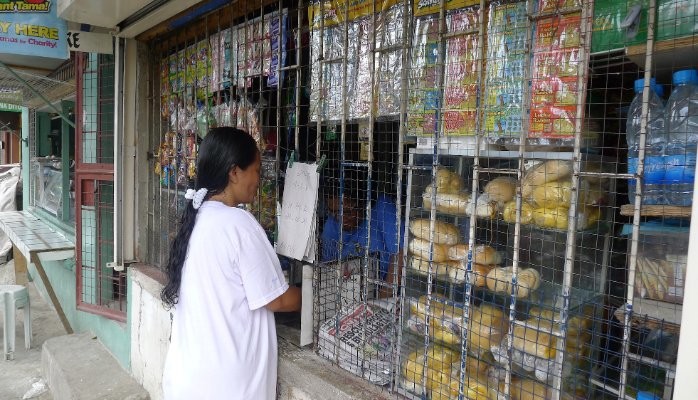
Creating effective Sari Sari Store channel merchandising materials
When I started working on shopper-centric projects, one of our most challenging goals was to efficiently merchandise the Filipino traditional trade a.k.a. the sari-sari store (SSS). Even today, brands are still competing for space in and outside of the already-cramped channel. When majority of the Filipino population purchase their everyday items here, why wouldn’t they?
Because of the overcrowding of brand messages in the SSS, there’s absolutely no guarantee that the poster you place today won’t be covered by the competitor’s tomorrow. It is definitely a Point-of-Sale (POS) kill-zone. Many brands have tried to innovate, creating “poster framers” to ensure their space for a longer time within the channel (I know this since I was part of the team that first created that locally). But I now realize that keeping your POS pristine longer should not be the primary task of communications in the sari-sari store. It still is part of the plan, sure, but innovations shouldn’t be focused on that alone.
Why? Because shoppers go in and out of the channel within 15 seconds.
In all of the independent SSS shopper audits we conducted, majority of shoppers were in and out of the sari-sari store in 15 seconds. For a category-specific example: In a 2012 independent study that we conducted, we found that 88% of alcoholic beverage shoppers immediately called out their purchase within 15 seconds upon arriving at the store.
Click for a short video to see how usual SSS transactions happen: SSS Transactions Video
This is an important information on the shopper behavior. It means that the POS communication should have a different role.
Persuasion or influencing should happen even before the shopper gets to the store.
The store itself is only a purchase zone. This is why most shoppers bring exact change. Purchase has already been planned before they even get there. Think of it as the grocery cashier.
The area around the store should be seen as a big opportunity to persuade the shoppers for both immediate or future purchases. We are not talking giant billboards here but more of grassroots out of home efforts. Communication points should center on what the shopper mindset is in that area to seed the desire for the product. How can this be done? Through a mix community fixtures or grassroots outdoor media that infiltrate the lifestyle of the target market. Think pedicabs, lamp post banners, dressing up of community hang-outs. It all depends on who your target is. They key is to be present in their everyday journey through the "neighborhood POS".
Materials in the store should instead affirm the shopper’s choice either through price and right SKU communication, simple availability messaging, or by giving shoppers a consistent experience in-store, as promised by the brand.
If this is the shopper behavior, then it’s time to recall what the most important on-site SSS POS objectives are. In my opinion, trade marketing should focus on the following:
a) Materials that can be seen from across the street like privilege panels, flag chains, streamers and stick-outs to communicate availability or maybe announce an ongoing consumer promotion, all before the shoppers reach the store;
b) Innovative merchandising materials that get your product displayed at the store front. I emphasize innovative because the SSS owner cares about selling items that shoppers ask for but at the same time also cares about selling his other merchandise as well (be it a competitor brand or another category). It’s important to create a product rack/display that takes this fact into consideration;
Nestle Portfolio hangers displayed in front of stores help sari sari store owners in organizing merchandise.
Cigarette containers for selling "tingi" or per piece.
c) Store innovations that complement the shopper behavior. For example, if you have a number of snacks solutions you’d like to sell, knowing that their behavior is go to the store with a consumption occasion in mind and only decide what to get based on what they see on the store front, then a snacks menu approach might work for you.
In-store merchandising strategy should be influenced by channel and shopper insights. Not by what looks cool and new. Not by your trade marketing team limitations (vamp up your trade team instead). Not by reacting to what the competitor is doing. Study your shoppers well and get a good retail communications strategist who can help translate these insights into excellent executions. I guarantee you’ll save a lot of time and money.
Credits to Michael Robinson for being instrumental in training me on how to unlock shopper insights.
Credits to Chin Pangan of POPManila, Inc. for the Infographic.




Founder | Master in Innovation & Business Candidate | AIM
9yThis is a very insightful post, Aya. I remember when I used to be with the FMCG industry, the merchandising boys I worked with were willing to fight tooth and nail to secure the best and the biggest spot in a 4 meter x 6 meter sari-sari store frontage only to be covered by the competition the next day. The violent cycle went on and on and everything really went to waste.